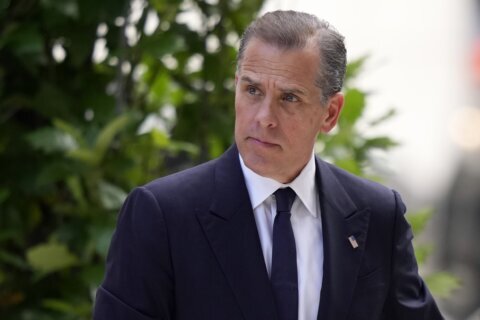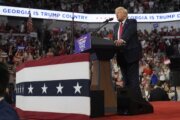Trailblazing inventors have followed diverse paths through college.
Inventors come from every walk of life but are typically motivated by curiosity and intellectual challenge, so it may be no surprise that many spend years studying and working at universities. While many earn doctoral degrees, others spend only a short time at college or never enter higher education at all. Some of these inventors’ contributions to society include household names like Band-Aids and Bluetooth. Others don’t roll off the tongue — think selective aromatase inhibitors — but save thousands upon thousands of lives. Here’s a look at where some famous inventors attended college.
Stephanie Kwolek — Kevlar
Stephanie Kwolek was planning to save money for medical school when she started working as a chemist in the Pioneering Research Laboratory for the chemical multinational DuPont in 1946. “The only problem,” she later recalled, “was that I became so enamored of the work that I totally lost interest in medical school.” Nineteen years later, still working at DuPont, Kwolek invented Kevlar — the lightweight, heat-resistant, stronger-than-steel fiber that’s used in bulletproof vests and body armor, spacesuits, suspension bridges, firesafe suits, sports equipment, vehicles and fiber optics. Born in New Kensington, Pennsylvania, Kwolek earned her chemistry degree in 1946 from the women’s college of Carnegie Institute of Technology in Pittsburgh, now Carnegie Mellon University. She is named on 28 patents and died in 2014 at the age of 90.
Earle Dickson — Band-Aids
Earle Dickson was working as a cotton buyer for manufacturer Johnson & Johnson when he invented the Band-Aid in 1921 for his wife, who kept accidentally cutting herself in the kitchen. He took the idea to his employer and, while first-year sales of the original handmade bandages were lackluster at $3,000, Band-Aids became so successful that Dickson was elected to the board of directors in 1929 and quickly became a vice president. Born in Grandview, Tennessee, Dickson attended Amherst College in Massachusetts for two years and graduated from Yale University in Connecticut in 1913. He then spent a year studying at Lowell Textile Institute, which later became a part of the University of Massachusetts. Dickson, who died in 1961, held five patents, and the one-billionth Band-Aid brand plaster was produced in 2020.
Lonnie Johnson — Super Soaker
The Super Soaker pump-action water gun — which racked up more than $1 billion in sales and earned a spot in the National Toy Hall of Fame — was invented by a nuclear engineer. Lonnie Johnson’s field of research is energy technology, and in 1982 he was working on an environmentally friendly heat pump when he came up with the prototype for the Super Soaker. Born in 1949 in Mobile, Alabama, Johnson attended Tuskegee Institute — now Tuskegee University — in Alabama and earned his bachelor’s degree in mechanical engineering in 1973 and his master’s in nuclear engineering in 1975. He joined the U.S. Air Force, where he helped develop the stealth bomber program before joining NASA’s Jet Propulsion Laboratory in 1979, working on the Galileo mission to Jupiter. Since the Super Soaker was licensed in 1989, Johnson has worked on sustainable solar power and more efficient batteries. He holds more than 100 U.S. patents, including those that are the basis for the Nerf N-Strike line of products.
Angela Hartley Brodie — Selective aromatase inhibitors
Angela Hartley Brodie revolutionized breast cancer treatment by developing the first selective aromatase inhibitors, now among the leading drug therapies against the disease. Born in Lancashire, England, Brodie earned her bachelor’s and master’s degrees in biochemistry in 1956 and 1959, respectively, from the University of Sheffield in England, and her doctorate in chemical pathology from the University of Manchester in England, in 1961. Working as a research assistant at a cancer hospital in Manchester, Brodie saw how traumatic radical mastectomies were and was motivated to develop better treatments. About 500,000 women worldwide now receive aromatase inhibitor therapy each year. Brodie, who died in 2017, is named on 13 U.S. patents.
Wilhelm Conrad Roentgen — X-rays
When Wilhelm Conrad Roentgen discovered X-rays on Nov. 8, 1895, it revolutionized the world of medicine almost immediately. By early 1896, the first clinical X-rays, moving-picture X-rays, angiography and military radiology were performed. Born in Lennep, Germany in 1845, Roentgen studied mechanical engineering at Ecole Polytechnique Federale de Lausanne and at the University of Zurich in Switzerland. He went on to become a professor of physics at the universities of Strasbourg, Giessen, Würzburg and Munich, and his research extended to elasticity, piezoelectricity, capillary action of fluids, specific heats of gases and conduction of heat in crystals. For ethical reasons, Roentgen chose not to seek patents, believing the world should freely benefit from his discoveries. He died in 1923.
Jaap Haartsen — Bluetooth
Jaap Haartsen was living in Sweden and working on indoor wireless communication systems when he developed the specifications for Bluetooth in 1994. The name — a nod to a 10th-century Danish king — would come three years later. Born in 1963 in The Hague, Netherlands, Haartsen earned his master’s in electrical engineering at the Royal Institute of Technology in Sweden in 1986 and his doctorate in the same field from the Delft University of Technology in the Netherlands in 1990. “The original patent is for the way we connect and find each other using frequency hopping,” Haartsen told InfoWorld 10 years after his invention. “We were looking to improve connectivity to the phone accessories.” He helped establish the Bluetooth Special Interest Group, which standardized efforts in the same area by IBM, Nokia, Intel and Toshiba with Ericsson — his employer — so that devices made by different companies could talk to each other. Haartsen is named in more than 200 patents.
Margaret Wu — Synthetic lubricants
Margaret Wu invented revolutionary synthetic lubricants that improved fuel economy, oil life and engine performance, and reduced waste oil and engine wear. Born in Taipei City, Taiwan, Wu earned her bachelor’s degree in chemical engineering at the National Taipei University of Technology and her doctorate in physical organic chemistry at the University of Rochester in New York. She joined Mobil as an industrial chemist in 1977, one of just a handful of women chemists at the oil and gas giant at the time. In the mid-1980s, Wu discovered a new class of molecule and developed a new class of synthetic base oil, called polyalphaolefin, that changed how auto and industrial lubricants are designed and synthesized. She earned more than 100 patents.
Lisa Lindahl — Sports bra
First it was called the “Jockbra” — the prototype was made from two deconstructed jockstraps — then the more palatable “Jogbra.” In 1977 Lisa Lindahl was studying for her bachelor’s degree in education at the University of Vermont, working in the college’s admissions office and running 30 miles a week when she started working with Polly Smith, a lifelong friend, and Hinda Miller to create a bra that would let women run and exercise in comfort. The sports bra was patented in 1979, and Playtex purchased the invention in 1990. Born in Burlington, Vermont, Lindahl also earned a master’s degree in culture and spirituality from Holy Names University in California in 2007. She holds 10 patents.
Richard Drew — Scotch tape
Richard Drew invented masking tape in 1925 and transparent cellophane tape — known as Scotch tape — in 1928. Born in St. Paul, Minnesota in 1899, Drew studied mechanical engineering at the University of Minnesota, leaving after 18 months. In 1921 he became a lab tech at 3M, at the time a sandpaper manufacturer. The two-tone paint jobs popular on cars of that era were tough to finish, so Drew invented masking tape to get a clean, damage-free divide between the colors. Transparent, pressure-sensitive tape was his next invention, becoming very popular during the Great Depression for repairing ripped and broken items instead of buying new ones. Drew led a team that invented breathable surgical tapes, foam tapes, face masks, electrical insulation and road sign applications. He received more than 30 patents as an inventor or co-inventor and died in 1980.
Grace Hopper — Computer compiler
Grace Hopper is credited with inventing the first computer compiler, a software program that translates instructions from source code into machine code that computers can read directly. Born in New York City in 1906, Hopper graduated with her bachelor’s in mathematics and physics from Vassar College in New York in 1928, her master’s in mathematics from Yale in 1930 and her doctoral degree in mathematics and mathematical physics from Yale in 1934. In 1943, she enlisted with the U.S. Navy as part of the World War II effort. Commissioned as a lieutenant, she became part of the team working on the Bureau of Ordnance Computation Project at Harvard University in Massachusetts. Hopper’s first compiler, called A-O, was unveiled in 1949 and led her to co-invent Common Business-Oriented Language, or COBOL, one of the earliest standardized computer languages. Hopper, who worked well into her 80s and died in 1992, earned more than 40 honorary doctoral degrees. Her inventions were not patented.
Famous inventors who went to college
Stephanie Kwolek — Kevlar
Earle Dickson — Band-Aids
Lonnie Johnson — Super Soaker
Angela Hartley Brodie — Selective aromatase inhibitors
Wilhelm Conrad Roentgen — X-rays
Jaap Haartsen — Bluetooth
Margaret Wu — Synthetic lubricants
Lisa Lindahl — Sports bra
Richard Drew — Scotch tape
Grace Hopper — Computer compiler
More from U.S. News
Famous People Who Attended Community College
Law Schools That Trained Famous Lawyers
15 Fortune 500 CEOs Who Earned a Law Degree
Where 10 Famous Inventors Went to College originally appeared on usnews.com







